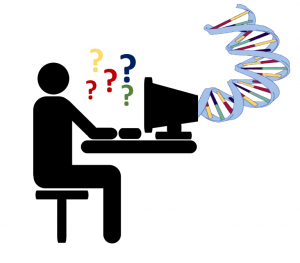PhD Dissertation
Genetic technologies are faster and cheaper than ever before, giving people unprecedented access to their personal genetic information. The primary route of access is currently direct-to-consumer (DTC) genetic testing, offered by companies such as 23andMe, Ancestry DNA, and Family Tree DNA (and a growing market of others). DTC companies offer interpreted reports based on customers’ genetic data, including information about physical traits, genetic ancestry, and familial relatedness to other customers. However, most companies also allow customers to download a copy of their “raw” or uninterpreted genetic data — literally a text file with hundreds of thousands of rows showing A, C, G, or T at all the DNA locations tested by the company (which, notably, is typically NOT the whole genome sequence).

A byproduct of the growing number of people with their genetic data sitting on their hard drives is the advent of third-party interpretation tools or websites. These are online platforms created by a variety of entities (companies, academics, citizen scientists, e.g.) where people can provide their raw genetic data and get some type of information or further interpretation in return. Like the DTC companies themselves, some of these tools are focused on genealogy research or genetic ancestry, while others lean towards health or wellness-related information.
In my doctoral dissertation research, I sought to understand why people do or don’t access their raw genetic data, and what types of pursuits they undertake once they have raw data in hand — e.g., with third-party interpretation tools. While I studied raw data accessed through DTC testing, my goal was to generate insights into what will happen as people obtain raw genetic data from other venues. Notably, clinical genetic tests are becoming more common for predicting, diagnosing, and treating disease. A US policy established in 2014 allows patients to directly access (i.e., without going through their doctor) their full laboratory reports which, for genetic testing, could obtain vast amounts of uninterpreted DNA sequence data. It’s likely that a patient population armed with raw sequence data could further open up the market for third-party interpretation tools.
Where to learn more
- My complete dissertation is accessible through UW Research Works and ProQuest.
- My chapter 1 work is published in the Journal of Genetic Counseling and summarized in a blog post on this site.
- My chapter 2 work is published in the American Journal of Human Genetics.
- I presented my chapter 2 work at the 2019 conference of the American College of Medical Genetics and Genomics (abstract #849, poster available here).